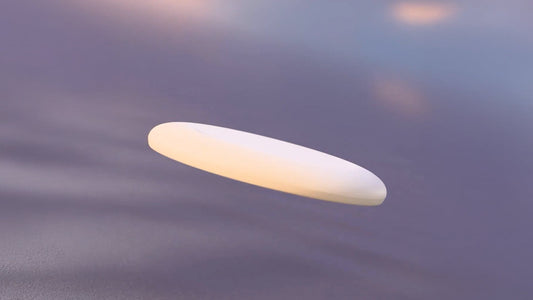Exploring the power of 3D printing, personal identity, and circular fashion
At the intersection of wearable art, emerging technology, and sustainable design, Slovak designer Ema Želinská is quietly reshaping the future of fashion. A student at Alexander Dubček University of Trenčín, Ema’s creative journey has already included runway showcases, national recognition, and now, a pioneering collection using Balena.Filaflex — a compostable 3D printing filament developed in collaboration with Recreus.
We sat down with Ema to learn more about her creative process, the philosophy behind her designs, and how materials like Balena.Filaflex are helping her bring thoughtful, circular fashion to life.
A New Generation of Fashion Thinkers
Ema’s journey into wearable technology began in an unexpected place: a school presentation on avant-garde icon Iris Van Herpen. The Dutch designer’s pioneering work with 3D printing lit a creative spark that never faded. That initial curiosity eventually led Ema to a hands-on course in Prague led by Linette Manuel, where she learned how to merge digital fabrication with fashion design. “It was a turning point,” she says. “I came back from the course knowing I wanted to create something meaningful with this technology.”
Back on campus, Ema began working on her bachelor’s thesis and Post Scriptum Tabula Rasa was born. The collection takes inspiration from the philosophical idea of the blank slate, gradually evolving into complex forms that represent how our experiences shape us.
“The lighter, rounder structures in the garments reflect joyful memories,” she explains. “As the designs progress, they become darker and more chaotic showing how challenges also form who we are.”
A Sustainable Story, Layer by Layer
While her concept began as an exploration of identity, Ema was equally determined to bring a sustainable lens to the collection. That’s where Balena.Filaflex entered the picture.
Crafted entirely from our flexible, compostable filament, the garments reflect not only Ema’s emotional narrative but also a practical one: that fashion design can evolve to be more circular, less wasteful, and still highly expressive. “Balena.Filaflex played a key role in bringing the collection to life,” she shares. “It supported the structure I needed while aligning with my vision for responsible design.”
Printed entirely by hand using a 3D pen, a slow, meditative process, Ema let her intuition guide the forms. Each garment was assembled from patterns wrapped in paper tape, which she then built upon layer by layer. “I didn’t overthink it,” she says. “The structure came together naturally.”
Sculpting Fashion by Hand, One Line at a Time
While most designers experimenting with 3D printing rely on software-generated files and automated printers, Ema took a radically hands-on approach: every single piece in Post Scriptum Tabula Rasa was made entirely using a 3D pen.
Yes, a 3D pen.
No machine-driven precision. No printing queue. Just hours of patience, vision, and movement like sketching in mid-air with molten material.“It was a meditative process,” Ema says. “I followed my intuition. The structures revealed themselves as I worked.”
To bring each garment to life, she first created physical patterns, covered them in paper tape, and then began "drawing" directly onto the forms with Balena.Filaflex. Slowly but steadily, intricate structures emerged: soft swirls, sharp edges, layered textures - all sculpted freehand.
The result? A collection that feels alive. Organic. Imperfect in the most intentional way.
This method not only pushed the limits of traditional garment construction, it also aligned beautifully with the conceptual depth of the collection. Just as the garments reflect the evolution of human identity through experience, the process itself mirrored that same philosophy: slow, personal, layered, and deeply human.Working with a 3D pen requires control, patience, and an eye for form in motion and Ema’s ability to shape something so precise and poetic from such a raw method is a testament to her talent, and to the material’s versatility.
In a world of fast fashion and faster machines, this was a deliberate act of slowing down.
And it made all the difference.
The Material that Makes the Message

Using Balena.Filaflex in a creative project, Ema found herself surprised not just by its sustainability, but by its functionality. “It was incredibly soft and elastic,” she recalls. “And the smell, so much more natural than traditional plastic filaments. It made the process enjoyable.”
Despite being biobased and compostable, Balena.Filaflex didn’t compromise on performance. “Its technical properties are comparable to plastic, but it’s made from natural ingredients. That balance is really important for designers like me, who want both innovation and responsibility.”
For Ema, this opens new doors for the future of wearable design. “It shows that sustainability doesn’t have to limit creativity. It can actually enhance it.”
Reactions That Matter
Unveiled at her university’s fashion show, Post Scriptum Tabula Rasa sparked conversations well beyond its visual complexity. Viewers were drawn to the tactile nature of the garments and the clear evolution of form but it was the story behind the material that truly captivated them.
“When people found out the material was compostable, it shifted the whole dialogue,” Ema says. “They started asking about circularity, about how design can be more responsible. That’s the kind of reaction I hope to create.”
What’s Next
With her bachelor’s thesis complete, Ema is already looking ahead. Her master’s thesis will continue exploring circular materials, but this time she plans to move beyond the 3D pen and experiment with 3D printers to create garments designed for everyday wear.
“I want to push this further,” she says. “Not just as an art form, but as a real alternative for sustainable fashion.”
Her advice to other designers? Don’t be afraid to experiment. “Learn the basics, then play. Let your ideas evolve through the process. With the right materials, you can tell stories that are both personal and planetary.”
 "
"


